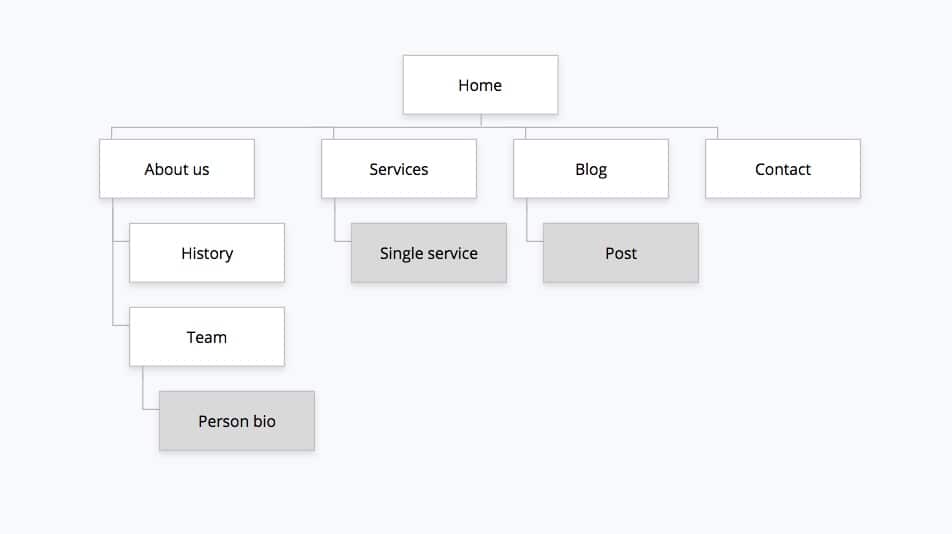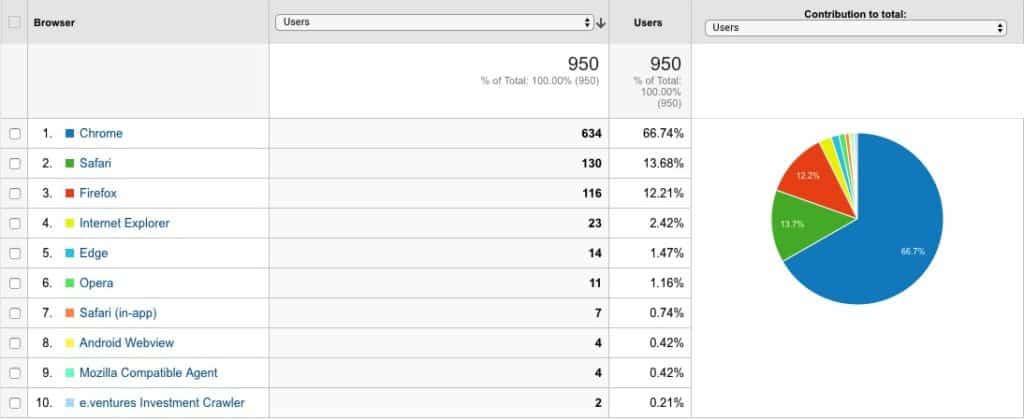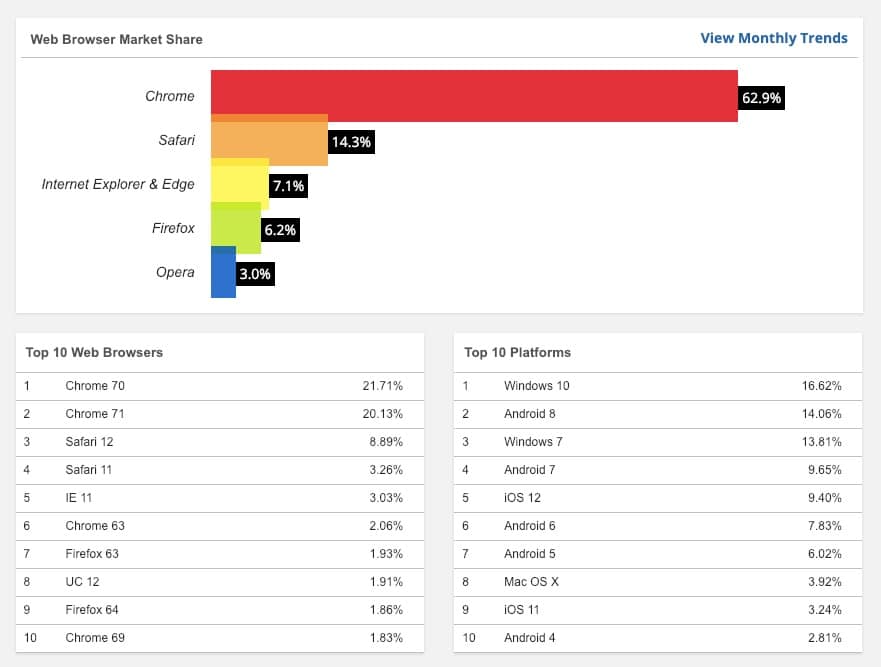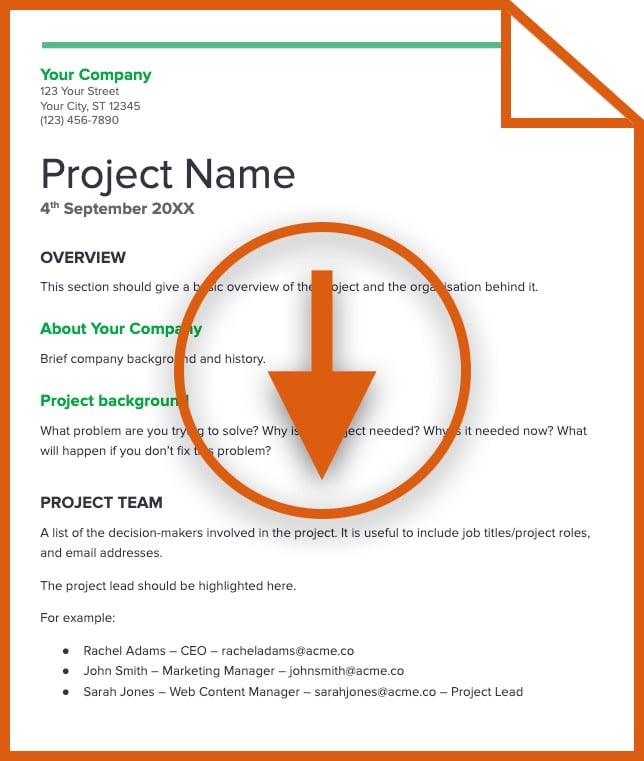

Do you want to set your website project up for success? Do you want to avoid any costly surprises along the way?
Of course, you do.
A thorough, focused web specification document will keep your web project running smoothly and, most importantly, will give you the best to chance of delivering a project that meets the goals of your visitors and your business.
In this guide, I’ll outline the key parts of an effective website specification and why they’re important as well as what we have learned, whilst running our WordPress agency, about what a web specification is, how to write one and what to include.
A website specification is a document that articulates the project’s goals, objectives and tactics. It should outline constraints, such as budget, deadlines, or technical restraints. It can also include project details such as the team involved, for example, stakeholders or points of contact.
Every website specification will be different. For example, a project might include both design and development, whereas another project might be a build only, with designs etc already completed.
However, there are some sections of a specification that will be common to most web projects.
The following is a list of some of those common sections, with descriptions and examples included. You can pick and choose which of these to include, or add sections that aren’t listed here.
Anything that is relevant to the project and that needs to be communicated should be included in your specification.
This section should give a basic overview of the project and the organisation behind it. An overview could include:
A list of the decision makers involved in the project. It is useful to include job titles/project roles, and email addresses.
The project lead should both be highlighted here.
Briefly describe the goals of the project. This will give developers an idea of what you are trying to achieve, which will enable them to suggest the most appropriate solutions.
Goals should be SMART, that is:
If this project is part of a bigger project, or there will be further phases following this project, it is useful to list these to give an indication of where this project fits into the bigger picture.
Content structure, or Information Architecture (IA), is comprised of various parts and will depend on the complexity and size of your website content.
This is usually provided as a diagram which shows the ‘tree’ type, hierarchical structure of the website pages. It can also include which ‘page template’ (see below) to use for each page and content type.

There are excellent tools available for creating website sitemaps. We love Gloomaps.
A website can contain many distinct types of content. At it’s most basic, there will usually be posts and pages. A page is timeless content, e.g. ‘About us’, whereas a post is chronological, e.g. a news or blog post.
Some other common examples of content types are:
For each content type, the data associated with that content type should be listed. For example, if there was a ‘Person’ content type they might require the following data:
A taxonomy is a scheme of classification for your website content. You can set site-wide taxonomies to be used across all content types, or you can have taxonomies that are specific to certain content types.
For example, if you had a recipe website you might want a taxonomy of ‘meals’ where the taxonomy terms would be ‘breakfast’, ‘lunch’, ‘dinner’, ‘snacks’, ‘dessert’, etc. You could also have a taxonomy of ‘cuisine’, with terms such as ‘indian’, ‘british’, ‘french’, etc.
On a blog, the most common two taxonomies are ‘Categories’ and ‘Tags’.
There are two main types of taxonomy:
Another example might be an ‘Industry’ taxonomy, which you could assign to your ‘Blog’, ‘Client’, ‘Case study’, and ‘Service’ content types.
A page template is a specific layout of information. For example, your ‘Home’ page will probably look different to your ‘Contact’ page.
Some examples of common page templates are below:
If you have designs (wireframes or mockups) for these page templates please include them here.
The content of this section will depend on whether a design already exists, or whether creating a design is part of the scope of work.
If design work has already been completed, then it can be referenced here.
There are many ways to provide design assets, for example:
It is important to provide a style guide and/or annotations for information such as:
Today’s websites are viewed on a wide range of devices and screen sizes. It is important to consider how your site will look, especially on small screens such as smartphones.
Mobile designs (and possibly tablet sizes) should be provided along with the usual desktop designs.
If the visual design is part of the project you will need to give guidance on the constraints and desired stylistic direction.
For example, if your organisation has brand guidelines that should be adhered to, they should be included here.
Each designer will have their own process, but it can help to provide:
Functionality is how your site actually works. This could be anything about specific parts of the website that need additional explanation.
For example, if you have a signup page, what fields are required? What happens to an entry on a contact form?
Many sites require integrations with third-party APIs. If this is the case then these integrations should be outlined here in terms of how they will work and any additional information that is needed. A good example of an integration is showing a feed of latest Tweets on your site.
Here are some examples of functionality you may want to mention, depending on your project.
Web accessibility is the practice of building websites that work for anyone, regardless of technology, location, or ability.

If you have browser and device data from analytics on a current site, it is useful to include it here. As you can see from the image above, internet explorer has a small (2.42%) usage, which might drive decisions on the level of support for that browser.
At the end of 2018 and the start of 2019, the global browser landscape looks like this:
 Screenshot showing the statistics of Browser usage for the end of 2018." width="881" height="667" />
Screenshot showing the statistics of Browser usage for the end of 2018." width="881" height="667" />
This section should outline the hosting requirements of the site.
If you already have a host that you would like to use, give details of the platform here.
For WordPress sites, the hosting requirements can be found here: https://wordpress.org/about/requirements/
Websites need to be updated, maintained and improved over time. If you are using a platform such as WordPress, the code base will quickly deteriorate if not regularly updated. This can lead to performance, compatibility, and security issues.
In your specification, outline any maintenance and support requirements that you have.
One of the most common problems that projects run into is that parties have made assumptions about who is responsible for certain tasks.
The classic example is who adds the content. Often people commissioning websites (rightly) assume that the web company will add all of the content. However, often this is not the case and the client receives an ’empty’ version of their website.
Your website specification document should include everything that is needed for this project to be completed successfully.
Some common assumptions to think about include:
Many projects, especially if using a ‘fixed-cost’ approach, will have set milestones along the way. These are clear phases of the project where you will be working on different aspects of the site.
Often, adding timescales or deadlines is a good idea, as this can help keep the project development focused and on track.
An example of some typical web project milestones are:
Even if you don’t have set milestones, it’s still important to have an idea of the timescales involved, especially if there is a fixed deadline – an event, for example.
Add any known deadlines to the specification document.
The budget required for the project should be clearly stated in this section. Often, a breakdown of the budget can be given here for the different milestones or phases, if this is appropriate.


Save yourself some time and hassle by downloading the web specification template.
The download includes .docx (e.g. Microsoft Word), .odt (OpenDocument Format) and .rtf (Rich Text Format) versions.
🙌 Pay what you want pricing.
🤝 100% money-back guarantee
Company Number: 09989726
© Highrise Digital 2016-2024